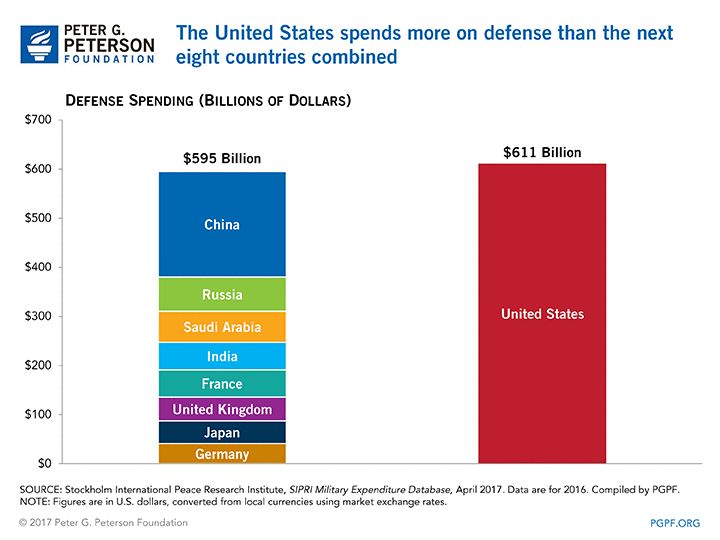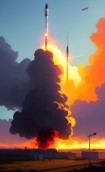|
Britain was kind of good at losing planes and saving pilots. See also: any time it was really foggy before the developed FIDO.
|
|
|
|

|
| # ? Jun 9, 2024 09:05 |
|
evil_bunnY posted:In a lot of cases the hurricanes could make a land strip. That only happened once. 9 combat launches for 8 lost hurricanes e: that's for CAM ships Captain Postal fucked around with this message at 10:42 on Feb 8, 2017 |
|
|
|
Captain Postal posted:e: that's for CAM ships
|
|
|
|
On this day 50 years ago - February 8th, 1967 - the Saab 37 Viggen flew for the first time. The Saab 37 Viggen is in many ways the epitome of Sweden in the Cold War. It is a monument over an era that is still in living memory, yet so utterly alien seen with today's eyes. Proportionally, the Viggen project was as big to Sweden as the Apollo program was to the US economically, but it goes further than that. The Viggen is more than just an aircraft - it is Swedish exceptionalism in distilled form. The on-paper neutrality, the oddball military doctrine and belief that our situation and requirements were different, the faith in domestic industry... A country with a population smaller than many metropolitan areas developed its own supersonic strike jet filled with unproven digital technology because it was believed that not only was it possible, it was necessary. This was before the Gripen and the idea of a small, "budget" fighter - the Viggen was designed because there was a task that needed to be done and nobody else had anything that fit the bill. The Viggen is almost as Cold War by Swedish standards as something like Project Orion. Viggen variant recognition guide:   Flight manuals and other documentation (some of it are even in English) check my post history in this thread for more Viggen spergin' enough words, post the viggenest pics u got 
TheFluff fucked around with this message at 16:14 on Feb 8, 2017 |
|
|
|

|
|
|
|
Here's another effortpost I wrote for the DCS: AJS 37 Viggen simulator nerds, figured I might as well cross post it It has come to my attention that some people consider stage 2 of the Viggen's afterburner to be lagom. That's a very Swedish opinion to have, but it is also wrong and offensive to me and I will fight you about it. So, let's talk about afterburners. Many aircraft have them. They are useful, since in aircraft of the Viggen's era they tend to give about a 50 to 60% increase in thrust over what's available at full military power (to be clear, I'm talking nominal static thrust here), and in some cases reaching up to a 70% increase over dry thrust, and things like the MiG-21's emergency afterburner can go up to 75% if I'm not mistaken. Now, on dry thrust the AJ(S)37 is slightly underpowered compared to its contemporaries, especially the twin engined ones like the F-111 and the F-4. It has a max takeoff weight (MTOW) of just under 19 tons, while the RM8A has a nominal dry static thrust of 65.6 kN, which means around 3.5 kilonewtons per ton. In other words, that's a thrust to weight ratio of about 0.35:1, where the contemporaries tended to approach 0.4 and had a bigger payload margin to boot. But what about the afterburner? Yes... The Viggen's afterburner, on the ground, at a standstill in a test rig, tops out at a nominal thrust of 115.6 kN, which is a 76% increase over max dry thrust, and unlike on the MiG-21 which reaches this neighborhood only while on a rapidly ticking overheating clock, the Viggen's afterburner will stay at this throttle level for as long as you have fuel to feed it (which, granted, isn't very long, but we'll get there). It doesn't stop there, though. Let us look at a thrust (and thrust to drag) chart, because everyone loves charts, right?  Standard atmospheric conditions (ISA), at sea level. On the vertical axis here, we have thrust in kilonewtons - if you don't speak metric, 10 kN is 2248 lbf, or approximately the force required to lift one metric ton at sea level. On the horizontal axis, Mach number. The afterburner stages are the shaded areas labeled zon 1, 2 and 3, with max dry thrust being the black line that follows the bottom of stage 1. The curved black lines marked 1-4 are total drag in level flight with four different external stores loadout "templates" where 1 is lightest/least draggy (drop tank plus something light/small like AIM-9's) and 4 is heaviest/most draggy (16x120kg bombs plus drop tank, basically). Similarly, the line marked R is total drag with a clean aircraft. Where those lines cross a particular thrust setting, that's where the equilibrium airspeed for that loadout and thrust setting is - in order words, that's the speed where the aircraft won't accelerate further because thrust pushing you forward is balanced out by the drag holding you back. Now, a jet engine works according to the principles of Newton's third law, or the conservation of momentum. It takes in air, accelerates it and shoots it out the back, and the equal and opposite reaction pushes it forward (a jet engine was called a "rea(ktions)motor" or "reaction engine" in Swedish in the 1940's and 50's). As your airspeed increases, the relative velocity of the air you're shooting out behind you decreases, and so we see what's happening in the bottom of the chart, at dry thrust and min zone 1: by the time we're up to Mach 0.55 (distance-economical airspeed at sea level), dry thrust in the real aircraft is down to under 50 kN from the 65 we had at a standstill in the test rig. In the transonic region (Mach 0.9 and above), dry thrust - and thrust in zone 1 afterburner - starts dropping sharply. However, in the upper part of the chart, there's something else going on. Recall that the RM8A is based on an early 1960's airliner turbofan that powered things like the DC-9, Boeing 727, and early 737's. That means it has a relatively high bypass ratio for a fighter engine, very close to 1:1, which in turn means that the afterburner has a lot of cold, fresh air to burn and accelerate. The faster you go, the more air it has to work with, and the more thrust it produces. From the chart we can see that in zone 1, as airspeed grows, this is just enough to outweigh the loss of thrust from the regular engine. In zone 2, the added thrust from the afterburner grows faster than the dry thrust drops, and total thrust now increases slightly with airspeed. In zone 3, though, and especially at max zone 3, that's where the fun begins. At sea level and max zone 3, increasing your airspeed by 0.1 Mach also increases your total thrust by ~5-7% throughout the entire speed envelope (at low speeds - up to around M 0.7 - in clean configuration, the aircraft actually accelerates faster the faster it flies because thrust increases faster than drag). The test rig maximum of 115kN is passed at around Mach 0.52, and at Mach 0.9 you're up to around 145 kN, which is over three times the dry thrust you'd have at that airspeed. Remember that figure of a typical increase of 50-70% over dry thrust? That was a in the test rig on the ground, so the numbers aren't really comparable, but it's still amusing to note that max zone 2 gets you 70% over dry thrust at Mach 0.5. Max zone 3 in that situation is like adding another afterburner on top of the regular afterburner, because max zone 3 gives you another 60 percentage points, topping out at 130% over dry thrust at that same Mach number. All of this comes at the price of massive fuel consumption, of course (over 15% of internal fuel per minute is easily achievable), but now I'm finally starting to get to the point. I've seen some people limit themselves to zone 2, presumably because they think that this will save them fuel. In many cases this simply isn't true. Yes, zones 1 and 2 use less fuel per minute, but you gotta ask yourself why you're throttling up. A lot of the time, it's simply because "I want to go faster". Well, zone 3 also wants you to go faster, as indicated by the fact that it gives you more fun (thrust) the faster you go, and if you are nice to the aircraft she will also be nice to you. Let's have a look at an acceleration chart:  Standard atmospheric conditions, sea level, loadout in group 3 (roughly speaking, four rocket pods and a drop tank), full fuel minus 275 kg to account for takeoff and initial acceleration up to Mach 0.55. On the horizontal axis (way down at the bottom), Mach number. Vertically, we have three different graphs, where the lines marked "MAX SL" is max dry thrust and the other three are max afterburner zone 1/2/3 respectively. At the top, time taken to reach the given Mach number, in minutes. In the middle, fuel used, in percentage points (full internal fuel is around 100-106%). At the bottom, distance covered over the ground, in kilometers. We can tell two important things from this diagram. First, acceleration in max zone 3 is hilarious. Even with this relatively heavy loadout (and full fuel, too) you go from M 0.55 to M 0.8 in about 15 seconds. Additionally, the Mach number/time relation is almost linear all the way up to the transonic region because the thrust increases almost as fast as the drag does. Well, we already kinda knew that. Second, and more importantly, accelerating in max zone 2 is no more fuel efficient than doing it in zone 3. In fact, it rapidly becomes less fuel efficient. Zone 1 (or even max dry thrust) can be more fuel efficient if you're going slow and the desired difference in speeds is small, but if all you're thinking is "man I wish I was going faster right now", just kick it straight into max zone 3 - the shorter time needed for the acceleration outweighs the higher fuel consumption. The differences are smaller on a lightly loaded aircraft, but zone 2 is insignificantly more fuel efficient for acceleration even on a clean aircraft. On heavier aircraft or on a hot and humid day, the differences are bigger, in zone 3's favor. At higher altitudes, say 5-6km and above, max zone 3 is almost always the most fuel efficient (exception for small speed changes with light loadouts). If you reach the desired speed and want to maintain it, then you obviously throttle down, but for getting there just use max zone 3. The same thing goes for climbing, but there you also have to consider why you're climbing. If you just want to get high, right now, max zone 3 is almost always the most fuel efficient (or insignificantly less fuel efficient than the other options) and it gets you there really fast. If you want to climb because you're going to do a long ferry flight and want to take advantage of the better fuel economy per kilometer at high altitude, it's better to climb dry or in zone 1 because you'll spend about the same amount of fuel as in zone 3 but also cover a long distance while doing it. The exception to this rule is takeoff, where zone 2 is generally a good compromise between thrust and fuel consumption, except with very heavy loadouts. Well, as long as you have runway to spare, that is... tl;dr: zone 1 is useful for making noise and keeping formation at high subsonic speeds, zone 2 is rarely useful, zone 3 is the FARA zone Addendum for a more relevant and correct comparison with other aircraft of the period: according to the F-14D flight manual, the GE-F110-400, which is about 20 years younger, starts at 61 kN static dry thrust installed in the aircraft. The RM8A cranks out 65.6 kN in the test rig and does 55 kN installed in the aircraft at M 0.3, so eyeballing the thrust diagram let's say 60kN-ish static in the aircraft, which is a very conveniently close figure. Going from there to Mach 0.9 at sea level in full afterburner, the F110's thrust more than doubles to 134 kN, but in the same conditions the RM8A is now up to 145 kN. It's pretty interesting to see that the mid-60's airline engine conversion not only keeps up but actually edges ahead as far as thrust goes, but the F110 is a bit lighter and smaller and has very significant advantages in basically every other area (like fuel economy, maintenance requirements, avoiding compressor stalls at high alpha and so on and so forth). And of course the F-14 is cheating and has two of the things while not even coming close to twice the Viggen's mass. Further addendum, re: fuel consumption:  Standard atmosphere on the left, standard atmosphere +10° C on the right. At Mach 1.1 on the deck, ~19% of internal fuel (4476 kg, nominally) works out to about 850 kg/minute or 51 metric tons per hour. That's only 112,400 lbs/hour. Fuel consumption is lower at higher altitudes; doing Mach 1.6 at 8km MSL it's down to only 12%/minute. TheFluff fucked around with this message at 13:08 on Feb 8, 2017 |
|
|
|
  
|
|
|
|
post the road basest videos u got: https://www.youtube.com/watch?v=_pOkdmdHBsI Swedish Gripens also participated, so it's totally related to ongoing Viggen chat  
|
|
|
|
I just wanna say I appreciate the constant fount of Viggen wisdom and errata in here. It was one of my favorite planes as a kid.
|
|
|
|
|
This looks like a JA37?  THRUST REVERSERS  This one doesn't have an engine in it. Seeing it like this makes it look like the plane is 99% engine; it was hard to get a sense for how much interior space is available inside the wings, in front of the engine, etc. 
|
|
|
|
http://www.defense-aerospace.com/article-view/release/180884/two_thirds-of-us-navy-fighters-grounded-by-maintenance-backlog.htmlquote:Overall, more than half the Navy’s aircraft are grounded, most because there isn’t enough money to fix them. "Peace dividends"
|
|
|
|
Also 15 years of higher than average use even when not on war tempo.
|
|
|
|
Perhaps fewer of them would be busted if they hadn't been doing airstrikes off of carriers in Afghanistan, when there were perfectly suitable airbases?
|
|
|
|
Alaan posted:Also 15 years of higher than average use even when not on war tempo. Yeah I think the real problem here is that they haven't calibrated "average use" correctly. In the 26 years since the end of the Cold War, there have been what, 23 years of US military interventions in the Balkans, the Middle East, and Afghanistan? Maybe they should take into account that fighting a constant low-intensity conflict is going to be part of the definition of "peacetime" for the foreseeable future because humans are awful.
|
|
|
|
That Works posted:I just wanna say I appreciate the constant fount of Viggen wisdom and errata in here. It was one of my favorite planes as a kid. This. It's really cool to learn so much about a jet that I was obsessed with when I was a kid. Canards are hot, guys.
|
|
|
|
I knew it was bad, but I didn't know it was this bad: Testimony from the Army's Vice Chief of Staff: http://docs.house.gov/meetings/AS/AS00/20170207/105530/HHRG-115-AS00-Wstate-AllynD-20170207.pdf quote:Today, only about 1/3 of our BCTs, 1/4 of our Combat Aviation Brigades and half of our Division Headquarters are ready. Of the BCTs that are ready, only three could be called upon to fight tonight in the event of a crisis. In total, only about 2/3 of the Army’s initial critical formations – the formations we would need at the outset of a major conflict – are at acceptable levels of readiness to conduct sustained ground combat in a full spectrum environment against a highly lethal hybrid threat or near-peer adversary. Stated more strategically, based on current readiness levels, the Army can only accomplish Defense Planning Guidance Requirements at high military risk. http://www.defensenews.com/articles/grounded-nearly-two-thirds-of-us-navys-strike-fighters-cant-fly quote:The U.S. Navy’s F/A-18 Hornet and Super Hornet strike fighters are the tip of the spear, embodying most of the fierce striking power of the aircraft carrier strike group. But nearly two-thirds of the fleet’s strike fighters can’t fly — grounded because they’re either undergoing maintenance or simply waiting for parts or their turn in line on the aviation depot backlog. We've cut O&M to the bone to pay for Operation Bomb Useless Dirt. We really need to stop.
|
|
|
|
Phanatic posted:We've cut O&M to the bone to pay for Operation Bomb Useless Dirt. And grossly mismanaged procurements.
|
|
|
|
Wrong thread
|
|
|
|
Cat Mattress posted:And grossly mismanaged procurements. This is done on purpose. Take all the money for procurement projects, and then when you start a war it is Emergency Appropriation Time to buy bullets. As long as you get the big stuff built, you don't need to feed or care for it, because you can always beg money for that afterward.
|
|
|
|
I love that the JA-37 (Fighter Attack 37) is a completely new aircraft shaped to look like the old AJ-37 (Attack Fighter 37), and then they were given the same name to further add the confusion. Was this similar procurement shenanigans to the Super Hornet and Super Stallion? Or was there another reason?
|
|
|
|
I know it's an unwelcome truth and we all like having the mostest and the bestest but:
|
|
|
|
How much better would we be if we stopped bombing mud huts and trained up, retained and fixed what we had.
|
|
|
|
LingcodKilla posted:How much better would we be if we stopped bombing mud huts and trained up, retained and fixed what we had. AN UNBELIEVER IN OUR MIDST?! GUARDS, SEIZE HIM!
|
|
|
|
Captain Postal posted:I love that the JA-37 (Fighter Attack 37) is a completely new aircraft shaped to look like the old AJ-37 (Attack Fighter 37), and then they were given the same name to further add the confusion. There was some degree of procurement shenanigans involved, but not to that extent, I wouldn't say. The plan from the very start was to make the Viggen a "unity aircraft" (multi-role wasn't really a thing yet), so the intent to make many different versions was there from the beginning. Because the J 35 Draken was brand new in the early 1960's and did the fighter/interceptor thing pretty well for its time, the focus for the first version ended up being a replacement for the A 32 Lansen, which was a dedicated strike aircraft. When work on that (and the SK, SH and SF 37) was done, they immediately started work on the JA 37 but that took ten years to materialize and technology had moved on, lessons had been learned etc. There wasn't enough money or political support to start over on an entirely new aircraft so they just took the existing airframe and engine and improved everything that was reasonably possible to improve. The multi-role part (attack/fighter and fighter/attack) is kind of wishful thinking, though. The AJ 37 was a (maritime) strike aircraft that happened to be able to carry Sidewinders and autocannon pods, while the JA 37 was an air superiority fighter that happened to be able to fire unguided rockets. The engine being new in the JA 37 is a bit of an exaggeration as well - it's the same old JT8D-based turbofan, but with an extra compressor stage so it handles high alpha much better without compressor stalling itself to death, and has a few percent more thrust. It is longer though because of the extra compressor stage and that's the reason the fuselage is longer. TheFluff fucked around with this message at 00:23 on Feb 9, 2017 |
|
|
|
Mortabis posted:Perhaps fewer of them would be busted if they hadn't been doing airstrikes off of carriers in Afghanistan, when there were perfectly suitable airbases? Yes launching strikes off of carriers which the enemy could not see or attack is stupid. They know what aircraft takeoff from Bagram and know the ToT and they relay that information. An invulnerable launch platform could never be of use to the US military in a low intensity conflict. https://en.wikipedia.org/wiki/September_2012_Camp_Bastion_raid The Pope fucked around with this message at 03:07 on Feb 9, 2017 |
|
|
|
The Pope posted:Yes launching strikes off of carriers which the enemy could not see or attack is stupid. They know what aircraft takeoff from Bagram and know the ToT and they relay that information. Still a net savings to use bases on land.
|
|
|
|
The Pope posted:Yes launching strikes off of carriers which the enemy could not see or attack is stupid. They know what aircraft takeoff from Bagram and know the ToT and they relay that information. That's Marine air which isn't really a thing that you should use as a justification for breaking Naval aviation.
|
|
|
|
Mortabis posted:Perhaps fewer of them would be busted if they hadn't been doing airstrikes off of carriers in Afghanistan, when there were perfectly suitable airbases? LingcodKilla posted:How much better would we be if we stopped bombing mud huts and trained up, retained and fixed what we had.
|
|
|
|
I have finally caught up to this thread after several months of reading. Things I have learned: 1) USMC Aviation may be superfluous 2) The F-35 procurement process has not been ideal 3) 747s making GBS threads out AMRAAMS sounds cool, but is not practical 4) It's a miracle we all haven't been consumed by nuclear fire 5) Baloogan drinks scotch and Red Bull Here's an F-22 from outside the Seattle Museum of Flight from a couple of years ago: 
|
|
|
|
Mortabis posted:Perhaps fewer of them would be busted if they hadn't been doing airstrikes off of carriers in Afghanistan, when there were perfectly suitable airbases? Now you're on to something. We could find a coalition airbase in Afghanistan, park a ton of Harriers there, and maybe get around to protecting the perimeter sooner or later. What should we call such a bastion of leatherneck air power though...
|
|
|
|
The perimeter had been protected. just previous to the attack the defense force had been reduced to less than a third of what it was. The camp commander probably should have gone to jail and been DD'd but eh, that would be embarrassing.
|
|
|
|
Reminder that we've flown B-1Bs out of Qatar all the way to Afghanistan, avoiding Iranian airspace, for over a decade. poo poo's nuts, man. That's roughly 1,000 nautical miles just to hit the border.
mlmp08 fucked around with this message at 14:33 on Feb 9, 2017 |
|
|
|
Dead Reckoning's explanation is reasonable and sufficient, but I just don't buy the Camp Bastion argument. That happened once in 15 years. F-15s at Bagram never got blown up.
|
|
|
|
Mortabis posted:Dead Reckoning's explanation is reasonable and sufficient, but I just don't buy the Camp Bastion argument. That happened once in 15 years. F-15s at Bagram never got blown up. You think it's reasonable and sufficient that we couldn't construct the ramp space and hangar facilities for a squadron of fighters if it was advantageous to do so? Even considering the Air Force and Navy both have construction forces more or less permanently deployed to Afghanistan whose job it is to do exactly that?
|
|
|
|
The Pope posted:Yes launching strikes off of carriers which the enemy could not see or attack is stupid. They know what aircraft takeoff from Bagram and know the ToT and they relay that information. It was, in most situations, loving stupid. They weren't doing major ops, they were doing XCAS and other standard taskings. They were flying those missions SOLELY for appearances of relevance. They brought nothing to the fight that couldn't have been covered by in-country assets, and I would argue they were a drain on resources due to their inflexible refueling requirements and jettisoning unexpended ordnance. Edit: That's not entirely fair. The carrier was going to be parked there either way, as a strategic asset. I guess the justification could've been to actually use it for something besides looming over Iran. Godholio fucked around with this message at 17:08 on Feb 9, 2017 |
|
|
|
Prop Wash posted:You think it's reasonable and sufficient that we couldn't construct the ramp space and hangar facilities for a squadron of fighters if it was advantageous to do so? Even considering the Air Force and Navy both have construction forces more or less permanently deployed to Afghanistan whose job it is to do exactly that? The idea that it's cheaper on the margin to add aircraft via carrier over more aircraft parking is at least baseline plausible, whereas the idea that those planes would have been at risk flying out of Bagram but not the carrier is just silly.
|
|
|
|
The larger problem is that, with no defined end state, goals, or timeline, we've been supposed to be getting out of Afghanistan "any day now" for at least the last five years. This makes supporting things like major airfield infrastructure improvements in any given year irrational, as they would contract our assertion that we are not planning on a long term presence, and may be completed just as we are leaving. mlmp08 posted:Reminder that we've flown B-1Bs out of Qatar all the way to Afghanistan, avoiding Iranian airspace, for over a decade. poo poo's nuts, man. That's roughly 1,000 nautical miles just to hit the border. Godholio posted:It was, in most situations, loving stupid. They weren't doing major ops, they were doing XCAS and other standard taskings. They were flying those missions SOLELY for appearances of relevance. They brought nothing to the fight that couldn't have been covered by in-country assets, and I would argue they were a drain on resources due to their inflexible refueling requirements and jettisoning unexpended ordnance. Now, personally, I think that any resource spent in further pursuit of objectives in Afghanistan is wasted. There is no functional limit on ground commanders' desire for XCAS and ISR, so I don't see a problem with denying it at whatever level is deemed appropriate from a cost standpoint. I also don't give a single poo poo about Marine and Army troops using airpower as a woobie, and I don't think it's worth spending billions of dollars in O&M costs to hypothetically prevent the deaths of a handful of privates. Of course, I can say these things out loud because, unlike the CSAF and SecAF, I have the luxury of not being accountable to anyone for my opinions. E: The Pope posted:They know what aircraft takeoff from Bagram and know the ToT and they relay that information. Dead Reckoning fucked around with this message at 18:30 on Feb 9, 2017 |
|
|
|
Godholio posted:jettisoning unexpended ordnance. An F/A-18 can't land back on a carrier with it's ordnance?
|
|
|
|
The Pope posted:An F/A-18 can't land back on a carrier with it's ordnance? Safer not too.
|
|
|
|

|
| # ? Jun 9, 2024 09:05 |
|
I believe harriers literally cannot?
|
|
|


































